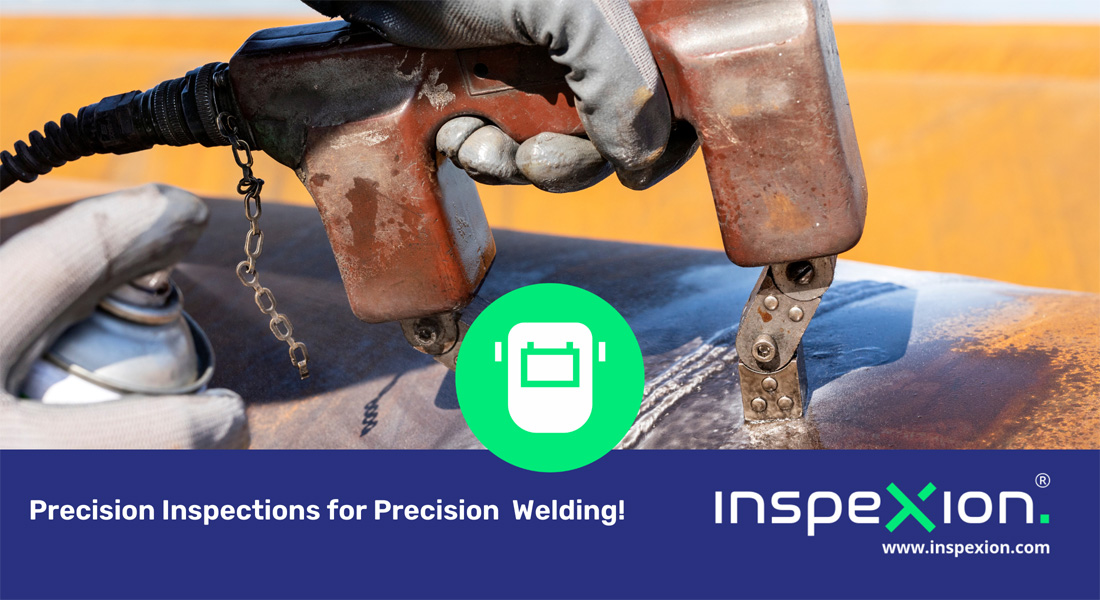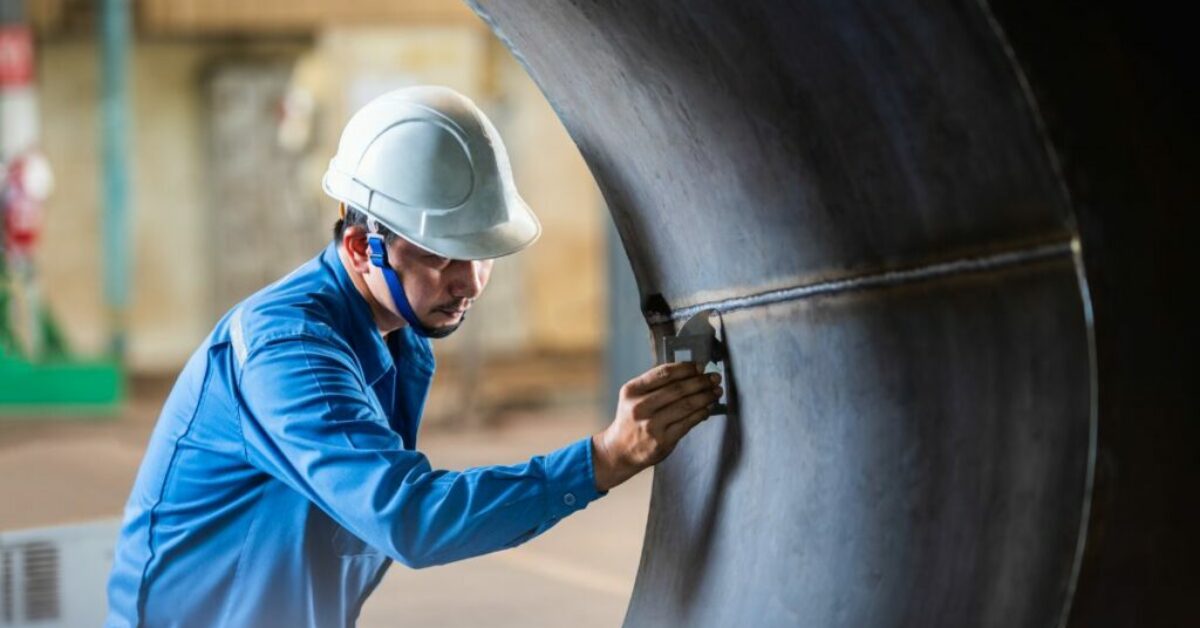
Checking Out the Various Methods and Specifications of Welding Assessment for Achieving Compliance and Reliability in Engineering Applications
The value of welding inspection in design applications can not be overstated, as it offers as a vital protect for ensuring architectural integrity and compliance with industry criteria. Numerous approaches, consisting of visual examination and advanced non-destructive screening strategies, provide vital insights into the quality of welds.
Relevance of Welding Inspection
Welding inspection plays a critical function in making sure the honesty and safety and security of welded frameworks. The importance of welding inspection can not be overstated, as it offers as a protect against possible failings that could result from poor welding practices.
Additionally, welding inspection is important for maintaining top quality guarantee throughout the welding procedure. It makes certain that the welds satisfy the needed mechanical and physical properties needed for their intended applications. Normal evaluations likewise cultivate a society of liability and constant renovation within welding operations, urging adherence to ideal practices and industry criteria.
In controlled industries such as manufacturing, construction, and aerospace, strict welding inspection protocols are mandated to follow lawful and security needs. Ultimately, efficient welding inspection not only shields human life and residential property yet also improves the longevity and dependability of welded structures, making it an indispensable aspect of design and construction.

Typical Welding Assessment Approaches
A selection of examination approaches are utilized to analyze the high quality and honesty of welds, each customized to detect details kinds of problems. Amongst the most typical methods is visual assessment, which entails a detailed assessment of the weld surface area to identify visible flaws such as fractures, undercuts, and poor blend. This technique is commonly the first action in the examination procedure due to its simpleness and cost-effectiveness.
An additional widely made use of method is radiographic examination, where X-rays or gamma rays permeate the weld to disclose inner issues. This strategy is especially reliable for detecting porosity and inclusions within the weld product. Similarly, ultrasonic screening uses high-frequency sound waves to determine internal problems, offering a detailed analysis of the weld's honesty.
Additionally, magnetic particle examination is used for ferromagnetic materials, permitting for the discovery of surface area and near-surface defects by observing and using magnetic areas bit patterns. Finally, color penetrant screening entails using a liquid color to the weld surface area, revealing splits and other suspensions upon assessment. Each of these approaches plays an essential function in ensuring weld quality and conformity with sector requirements
Non-Destructive Testing Methods
Non-destructive testing (NDT) methods are crucial tools in the assessment of weld high quality, enabling examiners to examine the stability of welded joints without causing damage to the products. Different NDT methods are utilized to identify prospective flaws, guaranteeing that welds fulfill the needed standards for safety and efficiency.
Among the most widespread techniques is ultrasonic testing (UT), which utilizes high-frequency sound waves to detect internal imperfections such as spaces or fractures. Radiographic screening (RT) employs X-rays or gamma rays to create photos of welds, disclosing any kind of gaps within the material. Magnetic fragment testing (MT) works for identifying surface area and near-surface flaws in ferromagnetic materials with the application of magnetic areas and contrasting fragments.
Fluid penetrant testing (PT) is another extensively made use of approach that entails applying a color to the surface of the weld, which seeps into any kind of fractures, making them noticeable under ultraviolet light. Each of these approaches provides unique benefits and constraints, and the choice of an ideal technique is critical to accomplishing accurate analyses of weld stability. Eventually, the application of NDT strategies substantially adds to the reliability and safety and security of engineering applications.

Regulatory Standards and Conformity
In the realm of welding inspection, adherence to regulatory standards and conformity is extremely important to guarantee the safety and security and reliability of welded frameworks (Welding Inspection Milwaukee). Various companies, including the American Welding Culture (AWS), the American Culture of Mechanical Engineers (ASME), and the International Company for Standardization (ISO), have established standards that control welding practices and examination treatments. These criteria offer a framework for quality control, describing the needed certifications for inspectors and the methods for examining weld integrity
Compliance with these regulatory standards not only improves the architectural stability of welded settings up other but also reduces dangers connected with failures, which can have catastrophic effects. Evaluations must be carried out using defined procedures, including aesthetic, ultrasonic, and radiographic approaches, to make certain that welds satisfy specified criteria.
Furthermore, adherence to these criteria is usually called for by regulation, specifically in markets such as aerospace, manufacturing, and building. Normal audits and accreditations are vital to keep compliance, thus fostering a culture of security and top quality within organizations. Ultimately, governing standards and compliance act as the backbone of trusted welding assessment practices, guaranteeing that crafted structures satisfy both performance expectations and safety and security demands.
Finest Practices for Welding Assessment
While keeping compliance with regulative requirements is crucial, implementing ideal methods for welding evaluation even more enhances the security and honesty of welded structures. Effective welding inspection starts with thorough preparation, which consists of understanding the details requirements of each job and making sure examiners are well-trained in applicable methods and standards.
Making use of a comprehensive evaluation list helps to make certain all important elements are evaluated, such as weld dimension, penetration, and visual defects. Non-destructive testing (NDT) methods, such as radiographic or ultrasonic testing, ought to be employed where ideal, providing a more comprehensive examination of weld top quality without jeopardizing the stability of the materials.
Documentation plays a substantial role in finest methods; keeping accurate records of evaluations, consisting of pictures, examination results, and compliance reports, makes sure liability and helps with future assessments. Additionally, fostering a society of open interaction in between welders Going Here and assessors can lead to find out here very early identification of possible concerns, advertising immediate corrective actions.
Final Thought
In recap, the implementation of extensive welding examination approaches and adherence to established standards are important for making sure conformity and integrity in engineering applications - Welding Inspection Milwaukee. Methods such as aesthetic evaluation, radiographic testing, and ultrasonic testing act as crucial tools in keeping and determining issues quality control. By cultivating a culture of accountability and excellence, organizations can boost the honesty and longevity of welded structures, eventually adding to the safety and efficacy of design tasks
Various methods, consisting of aesthetic examination and progressed non-destructive testing techniques, offer necessary understandings right into the high quality of welds.Welding examination plays an important duty in making certain the stability and safety of bonded structures.A range of examination approaches are used to examine the high quality and honesty of welds, each customized to find specific kinds of problems.Another extensively made use of approach is radiographic assessment, where X-rays or gamma rays pass through the weld to disclose internal issues.In the realm of welding inspection, adherence to regulatory requirements and conformity is extremely important to ensure the security and reliability of welded frameworks.